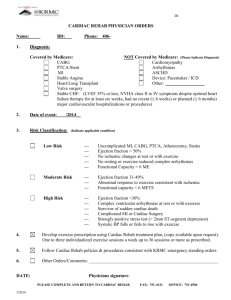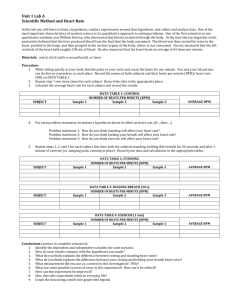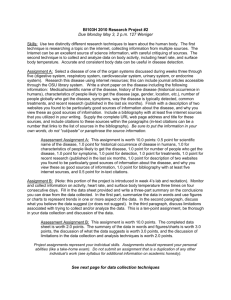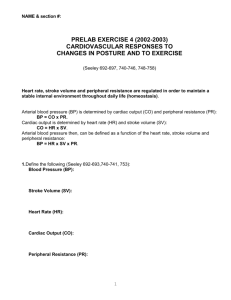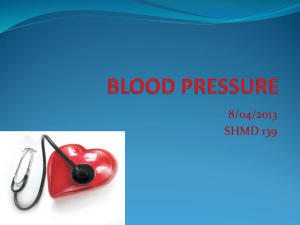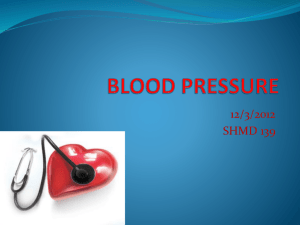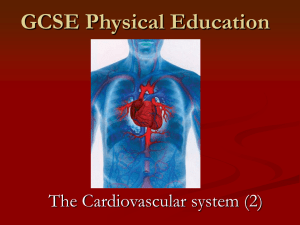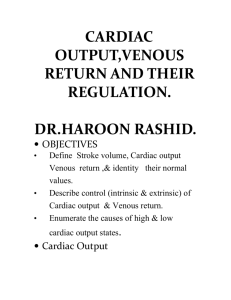Meredith Harrington
advertisement
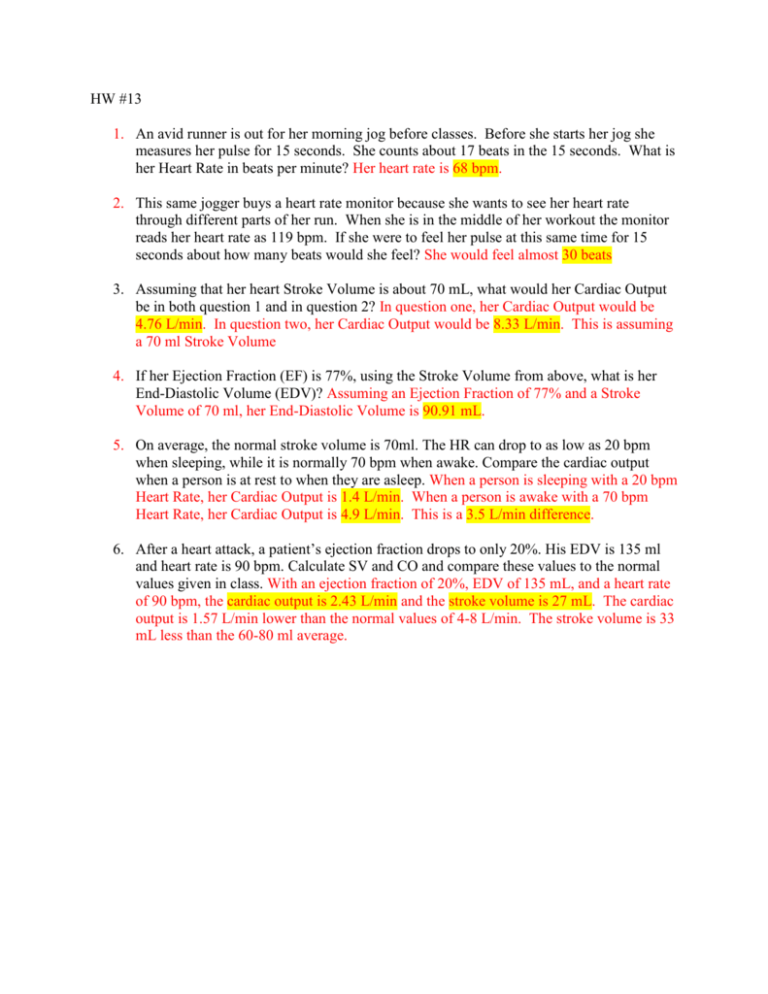
HW #13 1. An avid runner is out for her morning jog before classes. Before she starts her jog she measures her pulse for 15 seconds. She counts about 17 beats in the 15 seconds. What is her Heart Rate in beats per minute? Her heart rate is 68 bpm. 2. This same jogger buys a heart rate monitor because she wants to see her heart rate through different parts of her run. When she is in the middle of her workout the monitor reads her heart rate as 119 bpm. If she were to feel her pulse at this same time for 15 seconds about how many beats would she feel? She would feel almost 30 beats 3. Assuming that her heart Stroke Volume is about 70 mL, what would her Cardiac Output be in both question 1 and in question 2? In question one, her Cardiac Output would be 4.76 L/min. In question two, her Cardiac Output would be 8.33 L/min. This is assuming a 70 ml Stroke Volume 4. If her Ejection Fraction (EF) is 77%, using the Stroke Volume from above, what is her End-Diastolic Volume (EDV)? Assuming an Ejection Fraction of 77% and a Stroke Volume of 70 ml, her End-Diastolic Volume is 90.91 mL. 5. On average, the normal stroke volume is 70ml. The HR can drop to as low as 20 bpm when sleeping, while it is normally 70 bpm when awake. Compare the cardiac output when a person is at rest to when they are asleep. When a person is sleeping with a 20 bpm Heart Rate, her Cardiac Output is 1.4 L/min. When a person is awake with a 70 bpm Heart Rate, her Cardiac Output is 4.9 L/min. This is a 3.5 L/min difference. 6. After a heart attack, a patient’s ejection fraction drops to only 20%. His EDV is 135 ml and heart rate is 90 bpm. Calculate SV and CO and compare these values to the normal values given in class. With an ejection fraction of 20%, EDV of 135 mL, and a heart rate of 90 bpm, the cardiac output is 2.43 L/min and the stroke volume is 27 mL. The cardiac output is 1.57 L/min lower than the normal values of 4-8 L/min. The stroke volume is 33 mL less than the 60-80 ml average.
